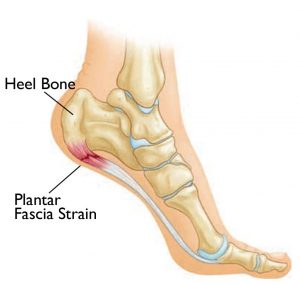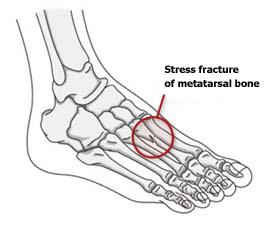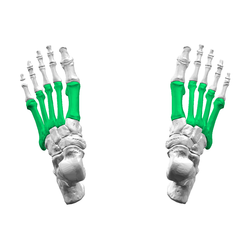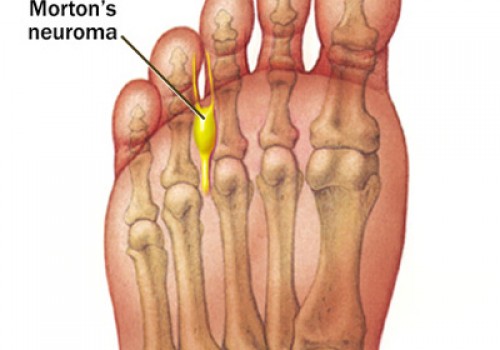Bottom Of Foot Pain (Near Toes, Swelling, Walking): 5 Causes

Last updated on July 26th, 2018 at 04:24 pm
Question: What causes bottom of foot pain and swelling?
Pain can happen anywhere in the foot, and this depends on which bone, tendon or ligament is injured.
If tendons and bones on the top of the foot are inflamed, you will experience top of foot pain. Likewise, if bones and ligament under the foot are inflamed, you will experience bottom of foot pain.
In mild cases, walking, jumping, standing for long hours will cause you to feel pain in the sole of your foot. This pain typically goes away soon after taking a rest. However, in cases of a bone fracture, stabbing or shooting pain continues even after stopping activity.
Causes of sharp pain in the bottom of foot are
- Plantar fasciitis
- Metatarsal fracture from a direct injury
- Metatarsal stress fracture
- Morton’s Neuroma
- Sesamoiditis
Therefore, if you experience bottom foot pain that is worsening, it may be a sign of a serious medical condition. If you are unsure about the severity of the injury, I recommend you see your doctor right away.  Here are some questions your doctor will ask you
Here are some questions your doctor will ask you
- When did you first observe the bottom of foot pain?
- How long is bottom of foot pain lasting now?
- Is pain under the heels, middle of the foot, or near the toes?
- Do you feel bottom of foot pain outside of the foot?
- Do you feel pain near big toe or little toes?
- Any recent injury to your leg, ankle or foot?
- Do you engage in long-distance running, ballet dancing, or any activity that keeps you standing on a hard surface for a long time?
- Do you wear high heels for long periods?
- Any swelling of the bottom of foot?
- What makes your bottom foot pain better?
- What makes pain under your feet worse?
This article explains why the bottom of your foot hurts, treatment options and when you must see a doctor.
What causes bottom of foot pain and swelling?
1. Lifestyle
In most people, bottom of foot pain may be attributed to the kind of exercise you do, dancing patterns, and the type of shoes you put on. For instance, wearing poorly fitting shoes such as high heels for long period increases pressure on the ball of your foot.
Other factors that can cause bottom foot pain are
- Standing for long periods of time during work
- Running for long distances especially with poorly fitting shoes
- Being overweight
- A sudden increase in the regularity and intensity of exercise
- Wearing flat shoes
2. Plantar fasciitis
If you experience bottom of foot pain near heal bone or at the middle of the foot, it is likely to be plantar fasciitis. Plantar fasciitis is the inflammation of the plantar fascia, a bowstring-like fascia that supports your body’s weight during standing, walking or running.
 Anatomically, the plantar fascia extends from the heel bone and is attached to the heads of the metatarsal bones. If it gets stretched repetitively, it may cause tear and inflammation resulting in pain under of foot.
Anatomically, the plantar fascia extends from the heel bone and is attached to the heads of the metatarsal bones. If it gets stretched repetitively, it may cause tear and inflammation resulting in pain under of foot.
What provokes plantar fasciitis?
- Long distance running with repetitive stress on the plantar fascia
- Ballet dancing
- Being overweight
- Standing for long hours at work
What are the symptoms of plantar fasciitis?
- Pain in the bottom of foot near heel that is sharp or stabbing in nature.
- Bottom foot pain in the morning after getting up from bed
- Heel pain after long hours of resting the foot
What can I do for plantar fasciitis?
Plantar fascia can be prevented by maintaining a healthy weight. Too much body weight adds extra pressure on your plantar fascia resulting in tear and pain.
Other ways to help with plantar fasciitis are
- Take painkillers (Ibuprofen/ Naproxen)
- Use correctly fitting shoes
- Avoid high heels
- Don’t walk flat-footed or barefooted
- Use ice under the foot for 10 – 20 minutes 8 times daily
- Inform your doctor if the pain is worsening
3. Metatarsal fracture
Another reason you could develop bottom of foot pain is a metatarsal stress fracture. A stress fracture means a small crack on the metatarsal bone. Usually, stress fracture causes mild or moderate pain when walking that fades away after taking a rest.
What causes metatarsal stress fracture?
Repetitive overuse of the foot is a common cause of pain among athletes. In severe cases, foot overuse results in small cracks on the metatarsal bone forming a stress fracture.
Other causes of stress fracture are
- Running for long distances common among athletes
- Sudden high-intensity exercise
- Walking or running on poorly fitting footwears (or worn footwear)
- Jumping and repeatedly landing on your foot bones
What are the symptoms of metatarsal stress fracture?
- Pain in the ball of feel near toes that worsens when walking, running or jumping. In the early stages, pain diminishes after taking a rest
- If a stress fracture is not immediately cared for, small cracks widen and may lead to a complete break in your bone. If this happens, you may feel pain all the time, even at rest.
- Pain is usually located in the middle of the foot (top and bottom) along the second and third metatarsal bones
How is metatarsal stress fracture treated?
First of all, metatarsal stress fracture heals without the need for surgical procedure. In most cases, you will be back on your feet within 6 and 12 weeks.
But first, you need to see your doctor to prevent a complete fracture of your metatarsal bones. Your doctor will request investigations such as an X-ray, MRI, bone scan, or CT scan.
Treatment of metatarsal stress fracture involves
- Use of well-packed ice (in a towel) for about 15 to 20 minutes 4 – 8 times daily (especially in the first two days)
- Resting your foot entirely to prevent widening tiny cracks in your bone
- Take painkillers to stop inflammation and pain on the bottom of the foot
- Elevate the foot to prevent swelling
- Completely immobilize the foot with hard cast or rigid shoes
4. Direct injury to the metatarsal bone
Besides tiny cracks on your metatarsal bone (stress fracture), direct, forceful injury applied to the foot can cause a complete fracture. If this happens, you will experience sudden onset sharp pain and swelling at the bottom of foot.
A direct foot injury may result from
- An opponent or teammate stepping on your foot during sporting activities (basketball, football)
- Twisting of your foot
- Jumping and landing on your forefoot
What are the symptoms of a complete metatarsal fracture?
- Sharp pain localized mostly on the area of the fractured bone
- Swelling and pain of the bottom of the foot
- Bruises on the skin
How is metatarsal fracture treated?
A metatarsal foot fracture can be managed by complete immobilization of the foot. Before this, an x-ray will be required to determine the severity of the injury. Also, your doctor will identify if fractured bones are displaced or not.
A displaced metatarsal fracture means the bones break completely and are not aligned in the anatomical position. This type of fracture will require surgical intervention.
Alternatively, if fractured bones are aligned together, conservative treatment listed here will be beneficial.
5. Morton’s Neuroma
Bottom of the foot pain near toes may result from a condition called Morton’s Neuroma (named after Dr. Morton). It is the formation of fibrous tissue around the plantar nerve that runs in the spaces between the second and third or third and fourth metatarsal heads.
Symptoms include
- Shooting pain bottom of the foot
- The feeling of walking on razor blades
- Numbness of the foot
Mortons Neuroma can be prevented in the first place because they frequently occur in women who use high heels. Changing your high heels to better fitting shoes will help ease symptoms. Painkiller and corticosteroid injections are also helpful.
